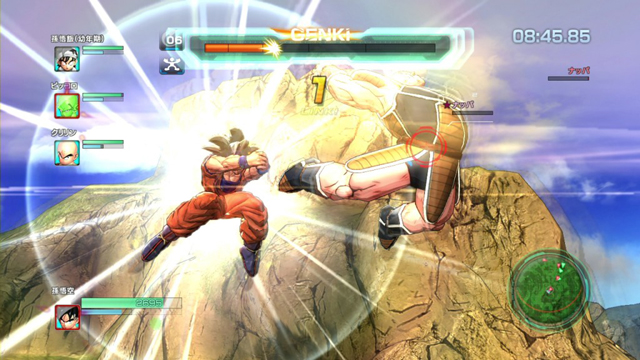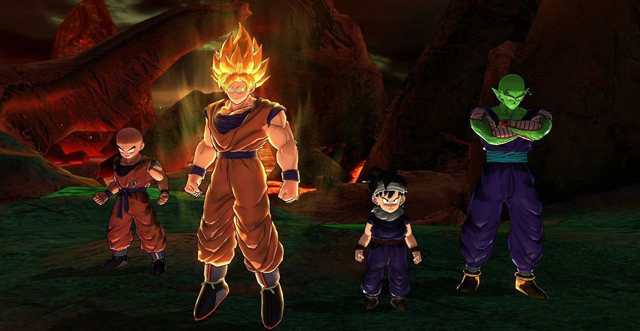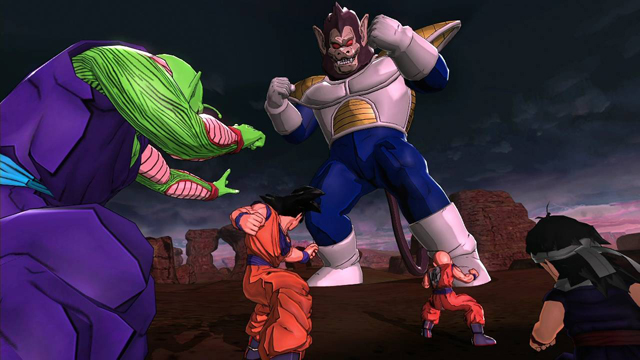
It’s been a while since gamers have gotten the chance to smash in a few anime characters heads with some Super Saiyans. Dragon Ball Z for Kinect is a game that’s best left forgotten, so it’s about time we all got to play a solid fighter that’s worthy of containing the awesomeness of the DBZ universe. Here’s everything you need to know about Dragon Ball Z: Battle of Z’s new mechanics, roster, stages, pre-order bonuses and more.
1. The Game Now Features A Four-Player Mode and An Eight-Player Battle Royale
Dragon Ball Z’s past fighting games have primarily focused on one-on-one gameplay scenarios. Battle of Z changes the formula for this latest iteration by incorporating four-player fights and eight-player Battle Royale scenarios. During the four-player co-op’s battles, players can even perform signature attacks together and actually heal each other. The eight-player Battle Royale mode is just as crazy as it sounds (four vs. four). Single-player gameplay is also available. The only restriction for the multiplayer gameplay is this sad fact – two players can’t play on the same console.
2. New Mechanics, Such as the GENKI Gauge, Are Being Implemented
Battle of Z still retains the fast paced and chaotic action the series is known for. During the co-op battles, players share a singular energy meter called the GENKI Gauge. As you and your teammates attack their opponents, the gauge fills up.
When it becomes full, one character can pull off an amazing ultimate attack. The player’s co-op buddies can give up some energy to their friends or take some energy from the gauge to use it for their own special moves. The heroes and villains can actually share Ki with each other, but in a cool twist they actually don’t show any appreciation for all that Ki sharing.
As for the game’s other new mechanics, check out the full list of them below:
– Meteor Chain: co-op partners can team up to launch into attacks that follow after each other
– Synchro Rush: players can rush their opponents together and get into simultaneous hits
– Revive Soul: players can revive their fallen partners by giving them so of their energy
3. Some New and Familiar Game Modes Will Be Playable

The game’s Single Mission mode works as the game’s main story campaign. 60 missions are featured in full, where players can choose to fight as the Z Fighters or their evil counterparts. Some of the anime series’ most famous moments, such as the Z Fighters battle against the Androids/Cell, are playable.
Two new story scenarios (a special history mode that’s a “What If?” scenario about the Saiyans and a huge battle against all of Goku’s family) are also a part of the game’s single-player mode. The Multi Mission mode is filled with for four player, online co-op missions. The Team Battle mode includes other mini modes such as Normal Battle, Score Battle, Battle Royal and Dragon Ball Grab mode. A Character Customization mode allows players to upgrade characters with in-game cards and different costumes.
4. Over 70 Characters Are Being Included in the Game’s Roster

The game’s official roster is actually split up into all the different transformations that most of the characters can morph into. It looks like there won’t be any in-game transformations this time around. Some of the most popular DBZ fighters, such as Goku, Vegeta, Trunks, Cell, Majin Buu etc., will make it as playable characters. Each of the fighters fall into one of four different categories (Fighting Type, Ki Blast Type, Support Type and Interference Type). Check out the full list of the playable characters right HERE.
5. Giant Boss Characters Will Take on the Form of Massive Battles

The more larger franchise characters seen in various DBZ sagas and films will show up in the game. None of them won’t be playable, though. Check out the full list of those massive bosses below:
– Great Ape Vegeta
– Great Ape Gohan
– Great Ape Bardock
– Metal Cooler (nucleus)
– Hirudegarn (Final Form)